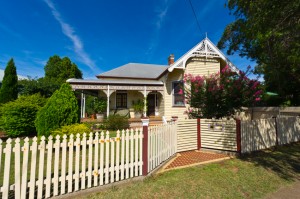 How easy would investment-making become only if we had a rough idea of housing trends. If only we knew how prices would fluctuate and where would the property market find its support and resistance levels. This however is wishful thinking. The Housing Industry Association (HIA) tries to find out the future trends, writes Charlotte Cossar in an article for realestate.com.au
How easy would investment-making become only if we had a rough idea of housing trends. If only we knew how prices would fluctuate and where would the property market find its support and resistance levels. This however is wishful thinking. The Housing Industry Association (HIA) tries to find out the future trends, writes Charlotte Cossar in an article for realestate.com.au
Archives
Latest statistics show the property market remains solid
 Property market cynics never tire of talking about a real estate bust. Times have really taken an interesting turn though and a few revealing property statistics have thrown eggs on faces of doomsayers. Michael Yardney in a terrific column for the Property observer highlights how the climate has changed a lot in the last one year.
Property market cynics never tire of talking about a real estate bust. Times have really taken an interesting turn though and a few revealing property statistics have thrown eggs on faces of doomsayers. Michael Yardney in a terrific column for the Property observer highlights how the climate has changed a lot in the last one year.
Australian housing nowhere close to a bust
 The Australian housing bubble is not bursting anytime soon. The prices may be high but they are so only because the cost of living is high says Gary Thomas, President of US National Realtors association. Larry Schlesinger while reporting for the Property Observer writes an interesting article that sheds light on how the US real Estate is looking to come through after the Sub Prime crisis years. Property legend like Gary Thomas feels that the difference in pricing is only because of differences in average income, liquidity and subsequent purchasing power.
The Australian housing bubble is not bursting anytime soon. The prices may be high but they are so only because the cost of living is high says Gary Thomas, President of US National Realtors association. Larry Schlesinger while reporting for the Property Observer writes an interesting article that sheds light on how the US real Estate is looking to come through after the Sub Prime crisis years. Property legend like Gary Thomas feels that the difference in pricing is only because of differences in average income, liquidity and subsequent purchasing power.
Gary Thomas does not speak through his hat. With over 35 years of experience in US Realty and managing a pan-Southern California firm called Evergreen Realty; he certainly knows a thing or two about the statements he makes. The prices of homes in US (inclusive of Foreclosure and Short Sales) have come up by 9.7% in the last one year. There are clear indications of property resurgence in California, Florida and Arizona. In fact, the states that had suffered most are coming up most strongly (says something about the US resilience- is it not their style since Lincoln’s time?)
While prices are increasing steadily, they are not exactly skyrocketing- this is especially because mortgage loans are not too easily available (Sub Prime days have resulted in extremely strict lending policies). Gary Thomas uses a beautiful satire when he says that lenders in US sometimes treat borrowers as those under trial for ‘inquisition”. All said, there is enough reason feels Thomas for Australia to take a keen interest in its near-boom property days without fearing a bust.
Does the Australian housing market remind you of days that led to the US mortgage crisis?
There won’t be an Australian property crash anytime soon
Bubbles do not wait for a decade to burst. Thus any suggestion about Australian Real Estate being close to a bubble phase is a myth. In an article written for Property Observer, Terry Ryder illustrates (and effectively) why there isn’t going to be an Australian property crash. While doing so, he speaks in line with what Glenn Stevens suggested about the Realty scene here.
Darlinghurst is the best performing Sydney suburb for 2012
 Darlinghurst, the cosmopolitan enclave in Inner Sydney, is the top performer amongst Sydney suburbs for 2012. For 53 properties sold in the year gone by, Darlinghurst picked up a median price of $1.057 million. This complimented with a 21.2% increase in the house prices, is certainly a news to cheer, says Glenn Dwyer in an article written for the Property Observer.
Darlinghurst, the cosmopolitan enclave in Inner Sydney, is the top performer amongst Sydney suburbs for 2012. For 53 properties sold in the year gone by, Darlinghurst picked up a median price of $1.057 million. This complimented with a 21.2% increase in the house prices, is certainly a news to cheer, says Glenn Dwyer in an article written for the Property Observer.
This is actually a super performance considering that the Inner city Sydney market has not shown any growth in 2012. A few sales worth noting:
- A four-bedroom terrace on Surrey Street sold for $1.59 million
- A five-bedroom Darlinghurst terrace on Liverpool sold for $2.275 million
- A four-bedroom house on Palmer Street sold for $1.275 million
Situated only 3.2 kilometers away from the CBD, it allows residents to experiment with a café lifestyle. This along with the powerful culture of the place is the major reason why Darlinghurst is doing so well.
On the heels of Darlinghurst comes Woodcroft and West Pennant Hill. In terms of percentage increase in prices, North Curl Curl is at number seven. However, it has done better than Darlinghurst in terms of median Price (and has produced 17 sales more than Darlinghurst)
Undersupply to keep prices up

Low land supply keeps prices higher
I was going through an article which discussed the State of the Land Report, released pretty recently by The Urban Development Institute of Australia (UDIA). An expansive yearly evaluation of land supply has thrown up some difficult truths. It says that there is an extreme shortage in development-ready supply of land all across Australia. This has brought about a big hike in house price, especially creating obstacles for the first time buyers. The report shows how a ‘Federal’ initiative is immediately required to decrease the gap between the land supply and demand. The UDIA feels that the housing supply and its cost-effectiveness is somehow not a priority with the government at the moment.
State of the Land Report recommends a plan to keep the rolling supply of land going, and also focuses on the need for Federal funding. It asks the Productivity commission to investigate the taxes imposed by developers and figure out easier means of financing homes. The Report also asks Local Councils to assess applications on merit and makes a point about updating the Commonwealth-owned land to find the exact status of supply for those lands.
The Report comes up with a startling statistic that land prices are continuously rising despite decreasing price of median sized lots. Sydney has made some progress in terms of lot production and is no more at the bottom. Melbourne is however a clear leader. Plans need to be approved more quickly, infrastructure needs to be provided faster, and funding has to be streamlined, according to the Report.











